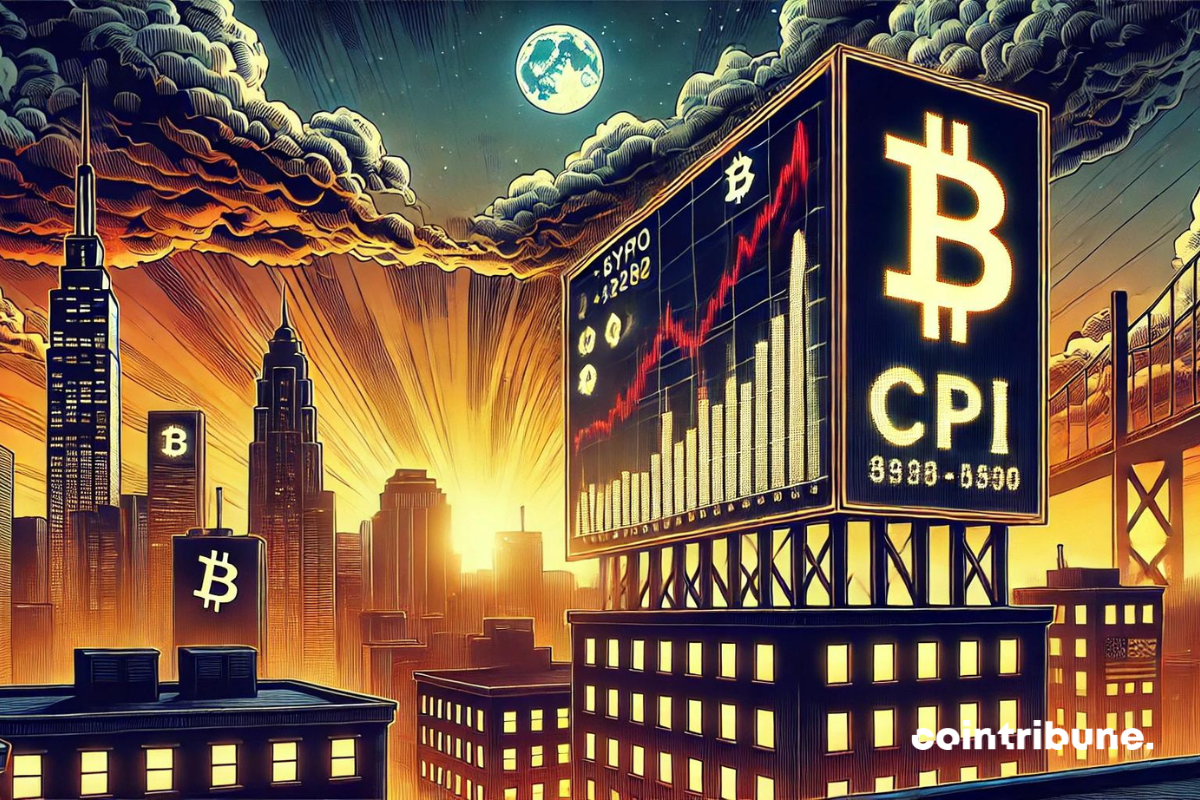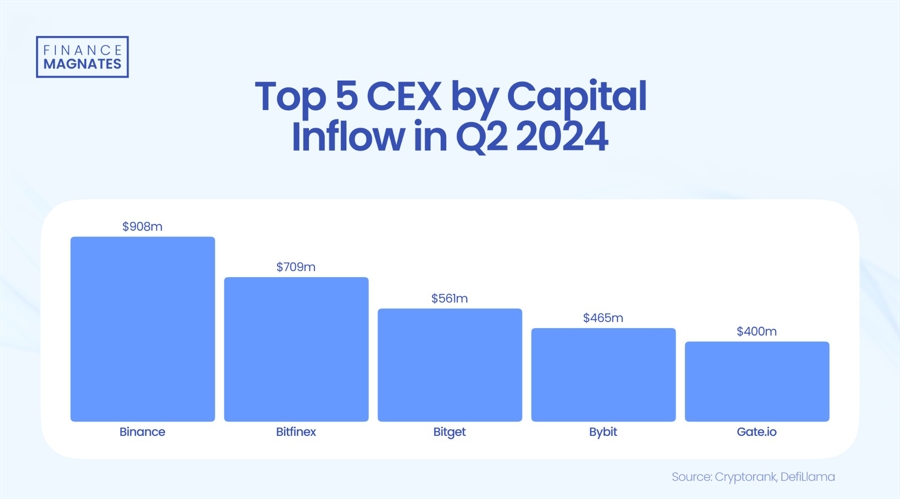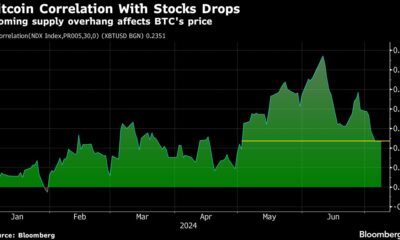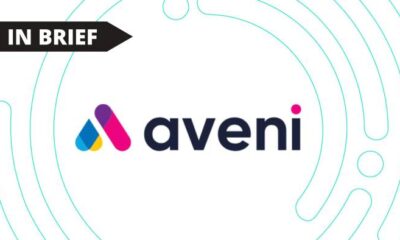News
The Night That Sotheby’s Was Crypto-Punked

It would have been the greatest insult to rock the Upper East Side on any normal night, but instead the private equity heir Holly Peterson could only laugh. Why had a Sotheby’s official denied her access to a bidding paddle?
In February 2022, Ms. Peterson, an author and art collector, was surrounded by a new clientele: the crypto nouveau riche, who made a temporary home of the art market. Their purchases occurred through the trendy innovation of NFTs, or nonfungible tokens, which registered the ownership of often digital artworks on the blockchain. Collectors then used the NFTs as rapidly appreciating investments to build their crypto fortunes.
The young collectors arrived in sweatpants and greeted one another by their Twitter handles. It was supposed to be another banner evening for the booming art market, where NFTs had come to represent almost half of the industry’s $65 billion valuation in only a couple of years. The marquee lot included 104 CryptoPunks, a selection of algorithmically generated portraits of pixelated people that epitomized the rise of blockchain-based collectibles. They were estimated to sell for $20 million to $30 million, and, for the first time, Sotheby’s had devoted a major sale to just a single lot of NFTs. It was a rare honor — one that hadn’t even occurred when the auction houses had a $450 million Leonardo da Vinci on their hands.
The night received all the marketing gusto that a company serving billionaires and their baubles could muster. Sotheby’s had described the event, called “Punk It!”, as “on par with the most significant and high-profile sales for contemporary and modern art.”
But there were early signs that the NFT market was crashing — a spectacular implosion that would shine a spotlight on the government’s failure to regulate the art market.
Ms. Peterson was one of many traditional collectors who attended the auction to purchase their first NFT. Her father was Peter G. Peterson, the private equity billionaire who founded Blackstone and served as a Museum of Modern Art trustee. And she was a trustee at the Studio Museum in Harlem and on several acquisition committees for organizations like the Whitney Museum of American Art, the Brooklyn Museum and Centre Pompidou.
But none of that pedigree could prepare her for the bizarre scene at Sotheby’s.
Ms. Peterson looked around and saw these new collectors who reminded her of little toddlers with paddles, she recalled in an interview. “What’s going on?” she said. “I’m a Park Avenue woman with a fancy art collection and I couldn’t even get a paddle.”
Buyers could pay in cryptocurrencies or regular dollars. A panel that preceded the sale included Kenny Schachter, a rabble-rousing collector and columnist at Artnet News, who, from his brownstone on the Upper East Side, had situated himself as a communicator between the crypto and traditional art worlds. (He had his own NFT project to promote.) A bulldog for the digital art movement, he managed to corner Max Hollein, the Met Museum director, one evening in Central Park, recalling that the museum executive said that his curators were too scared of the new technology to partake.
Speaking to the V.I.P. attendees at the Sotheby’s auction, Mr. Schachter waxed poetic about the promises of NFTs, saying they had “changed the history of art without even intending to be an art piece in the first place.”
An audience that included celebrity influencers like the rapper Ja Rule and Snoop Dogg’s son Cordell Broadus clapped. Behind the scenes, employees were scrambling to salvage what was supposed to be a historic sale.
According to three people close to the sale, there had been signs of trouble from the beginning of the auction house’s relationship with the seller, who operated from behind the username 0x650d. There was virtually no public information about him; his digital identity was created to promote his CryptoPunk collection, which he purchased in 2021 for around $7 million, saying that he acquired the NFTs “because I choose wealth.”
But he also said that he would never sell them, which should have been Sotheby’s’ first warning sign.
Sotheby’s had been the collector’s second choice to sell his CryptoPunks after he initially failed to secure a deal at Christie’s. And unlike the traditional collectors who attended the auction ready to buy the newfangled art, there was a lack of enthusiasm from crypto collectors. These NFTs were known as “floor punks,” meaning that they lacked certain attributes that gave other CryptoPunks their higher market prices. The algorithm that generated the entire collection of 10,000 images had statistical rarities baked into the code; for example, there were only nine punks dressed as aliens and 24 who looked like apes. (In March 2024, someone reportedly purchased an alien punk for $16 million.) But 0x650d’s collection contained only basic, run-of-the-mill examples of the NFTs originally created by Larva Labs, a studio run by the Canadian software developers Matt Hall and John Watkinson.
So there was little incentive for a serious NFT collector to buy this suite of tokens, especially at a time when purchasing a single CryptoPunk at floor price would have cost about $150,000. A simple calculation would have made clear that at $30 million, Michael Bouhanna, a digital art specialist at Sotheby’s, had overpromised on the total value of the lot by nearly double the high estimate of what a retail trader could find online, where a group of CryptoPunks this size would have gone for around $15 million. And then there was the matter of poor timing. Cryptocurrencies had just taken a nosedive with news that Russia had invaded Ukraine; risky assets looked less enticing with interest rates rising. There was still an appetite for speculation, but perhaps not as much when everyone’s wallets had suddenly depreciated in value. Risk needed some promise of reward.
NFTs Were a Symptom of the Unregulated Art Market
The NFT boom coincided with the art market’s growing reputation as a Wild West where paintings by artists like Marc Chagall and René Magritte turned into vehicles for sanctions evasion, money laundering and fraud, disguised by shell companies.
In 2020, for example, Senate investigators found that auction houses and dealers had allowed two sanctioned Russian oligarchs, the brothers Arkady and Boris Rotenberg, to buy and sell art using shell companies fronted by an art adviser. Their report concluded that brokers went through with the sale despite a failure to determine the true identities of their clients.
Despite that congressional scrutiny, a new era of deregulation was approaching, happening just in time for NFTs to thoroughly scramble the relationship between artistic merit and financial value.
The auction at Sotheby’s took place just weeks after the federal government had shied away from enforcing the Bank Secrecy Act on the art industry, which would have increased the scrutiny of financial transactions and ended the use of shell companies to conceal the true identities of buyers and sellers.
When Congress commissioned a report in 2021 to address concerns that the art market had become a safe haven for a number of financial crimes, the responsibility fell upon the Treasury Department and its aptly named deputy assistant secretary for strategic policy: Scott Rembrandt (no relation to the old Dutch master of the same name), who was unfamiliar with the financial esoterica of the art world.
Dealers were prepared for the worst after regulators in the European Union and Britain banned straw purchases — the practice of buying something on behalf of a secret purchaser — and other schemes that cloaked the true parties behind a painting’s sale.
Anxiety rolled into the next year as the New York attorney general’s office accused Sotheby’s of an alleged tax fraud scheme in which more than a dozen clients obtained false resale certificates to pose as dealers and avoid paying millions in tax revenue on their purchases. A judge allowed the investigation to proceed, saying there was enough evidence that senior members of the auction house “willfully turned a blind eye” to the scheme.
Tight-lipped dealers were not afraid of making noise when their profits were threatened; galleries and auction houses spent nearly $1 million over the past two years on lobbying federal officials in Washington on regulatory issues.
When the Treasury Department released its highly anticipated report in February 2022, it did not recommend immediate government intervention, despite clear evidence of criminal activity.
“We have found that while certain aspects of the high-value art market are vulnerable to money laundering, it’s often the case that there are larger underlying issues at play, like the abuse of shell companies or the participation of complicit professionals” who might look the other way, Mr. Rembrandt said in an interview, implying that art crime was more a byproduct of a flawed financial system than a characteristic of the industry.
But the Treasury official had relied on bad statistics. Mr. Rembrandt said that only $3 billion in money laundering and other financial crimes flowed through the art market every year. That was an errant number, which could be traced back to an unattributed claim from a 1990 article in The Independent by the British journalist Geraldine Norman about the antiquities market. (The Treasury Department did not respond to a request for comment.)
The lack of original research in the Treasury report demonstrated the government’s failure to deeply scrutinize the art market.
NFTs were, in some ways, a result of that oversight. They were more easily abused as vehicles for fraud than other kinds of art by virtue of their digital existence. Sales happened within seconds and without nosy customs officials or know-your-customer practices to impede criminals.
And although Mr. Rembrandt was unwilling to bring federal oversight to the art market, he still specifically called out the rising danger of NFTs in his report, warning: “These types of contracts can create an incentive to shape a marketplace where the work is traded repeatedly in a short period,” and adding that “traditional industry participants, such as art auction houses or galleries, may not have the technical understanding of distributed ledger technology required to practice effective customer identification and verification in this space.”
What happened only a few weeks later at Sotheby’s would illustrate the problems that Mr. Rembrandt raised and highlight the Treasury’s failure to establish new oversight regulations on the art market that would have required the auctioneer to perform more due diligence on its clients.
A Rug Pull to Remember
Back in the salesroom, the audience eagerly looked toward an empty podium where the auctioneer should have started the bidding nearly a half-hour ago. Instead, officials announced that the consignor had withdrawn the lot; everyone was still welcome to enjoy the after-party and listen to the sick beats of D.J. Seedphrase. Stunned, the young crypto investors sipped their last drops of champagne and exited out the auction houses’s revolving doors onto York Avenue. It looked like 0x650d had sized up the money he stood to make at auction and decided that it was unlikely to add up to the number he was looking for.
“The whole evening was totally surreal,” said Ms. Peterson. “The auction definitely made me think that something was rotten.”
For market rainmakers like Amy Cappellazzo, a former Sotheby’s executive, the event was even more significant. “It was an early sign that the crypto market was in trouble.”
NFT collectors needed strong sales to continue their momentum. But catastrophes like the Sotheby’s auction broadcast that the NFT industry’s best days were behind it. Traditional collectors like Ms. Peterson, who might have joined the digital art collectathon, were now backing away while skeptics celebrated proof of the blockchain’s impotence.
“Collectors from the old economy are afraid that their marketplace will be disrupted by these crazy, wacky forces,” Ms. Cappellazzo said. “There is nothing more tried and true than owning a hard asset like a painting and putting it on the wall. But anything that softens a hard asset will make them feel uneasy.”
The anonymous consignor, 0x650d, tried to salvage his online reputation. He posted on Twitter at 7:41 p.m., nearly an hour after pulling the lot, to announce his decision to “hodl,” cryptospeak for holding on to digital assets. About an hour later, he shared a meme that featured the musician Drake, saying he was “taking punks mainstream by rugging Sotheby’s.”
By “rugging,” he meant rug-pulling, a scheme in which crypto developers intentionally attract investors to a project, only to disappear without handing over a product.
Of all the crypto scams that deflated the NFT market, rug pulling was the most notorious and frequent because it transformed good will into a liability; there were at least four such scams that totaled more than $11 million in lost investments involving projects that imitated the Bored Ape Yacht Club, a high-profile set of NFTs. .
But the failed Sotheby’s auction was an unusual moment in which the provocative behavior of the crypto world bled into the art market.
And there was very little strategic benefit to the consignor’s public mocking of the world’s largest auction house; his rug-pull could only be bad for crypto’s reputation.
In the short term, it was clear that 0x650d believed he’d made a smart move. After the auction fiasco, his accounts on social media went silent for nearly a month, until April 2022, when he announced that his CryptoPunks collection would be used as collateral for an $8.32 million loan, unlocking the liquidity of his NFTs while allowing him to “retain upside exposure” through the collectibles. That loan appeared to be 40 percent of the low estimate that Sotheby’s had given for the value of his collection, indicating that 0x650d was able to use the auction house’s appraisal to legitimize the value of his NFTs. It let him keep his punks, so that he could, theoretically, sell them for more than he would have made at Sotheby’s — and use them as a piggy bank for liquidity in the meantime. It looked as if he’d used the art world as a mark.
But two years later, thanks in large part to the art world’s distrust of NFTs, Crypto Punks are worth far less. 0x650d appears to still hold his lot, which is now worth about $12.3 million, a significant decrease from the $20 million that he turned his nose up at Sotheby’s.
News
Block Investors Need More to Assess Crypto Unit’s Earnings Potential, Analysts Say — TradingView News

Block, a payments technology company led by Jack Dorsey square could become a formidable player in the cryptocurrency mining industry, but Wall Street will need details on profit margins to gauge the positive impact of the business on earnings, analysts said.
Block signed its first large-scale cryptocurrency mining hardware pact on Wednesday, agreeing to supply its chips to bitcoin miner Core Scientific CORZbut no financial details were disclosed.
JP Morgan estimates the deal could net Block between $225 million and $300 million, but said more information will be needed to assess the hardware business’s long-term earnings potential.
“We still have a lot to learn in terms of the margins of this business, so we are hesitant to underwrite this transaction until we know more about the cadence and economics,” J.P. Morgan said.
The deal marks a major step for the payments company, which started out as “Square” in 2009 before rebranding in 2021 in a nod to its focus on crypto and blockchain technologies.
Dorsey, who co-founded and ran Twitter (now known as “X”), has long been bullish on Bitcoin. Block began investing 10% of its monthly gross profit from Bitcoin products into Bitcoin in April.
In the first quarter, nearly 9% of the company’s cash, cash equivalents, and marketable securities consisted of bitcoin.
“This development (the deal with Core Scientific) is further evidence of Block’s role as an emerging leader in the crypto hardware ecosystem,” Macquarie analysts Paul Golding and Emma Liang wrote in a note.
Analysts say similar deals to follow could further validate Block’s reputation in the industry.
But J.P. Morgan said the stock’s performance will be determined by Block’s other segments, such as Square and Cash App.
Block shares have lost nearly 17% this year.
News
This Thursday’s US Consumer Price Index could be a game-changer for cryptocurrencies!

3:30 PM ▪ 4 minute read ▪ by Luc Jose A.
This Thursday, attention will be focused on the United States with the anticipated release of the Consumer Price Index (CPI). This economic indicator could trigger significant movements in the markets, especially for the U.S. dollar and cryptocurrencies. While investors remain vigilant, speculation is rife about the potential impact of these key figures.
The Consumer Price Index: The Cornerstone of the American Economy
The Consumer Price Index (CPI) is a key measure of inflation which reflects changes in the price of goods and services purchased by American households. This index is calculated monthly by the Bureau of Labor Statistics (BLS) and serves as a barometer for the cost of living. The consumer price index covers a wide range of products, including food, clothing, housing, health care, and entertainment. Economists and policy makers closely monitor this data to anticipate economic trends and adjust monetary policies accordingly.
The June CPI data is due to be released this Thursday at 2:30 p.m., and is highly anticipated by investors. The current consensus is for headline annual inflation to decline to 3.1%, from 3.3% the previous month, while core inflation is expected to remain stable at 3.4%.
THE BIGGEST EVENT THIS WEEK 🚨
The U.S. Consumer Price Index is expected to
PUBLICATION TODAY AT 8:30 AM ET.EXPECTATIONS ARE 3.1% WHILE
LAST MONTH THE CONSUMER PRICE INDEX (CPI) WAS 3.3%HERE ARE SOME SCENARIOS 👇
1) CPI above 3.1%
THIS WILL BE A DAMAGE TO THE MARKET
GIVEN THAT THE LAST TIME THE CPI DATA… photo.twitter.com/yudjPLPl8g— Ash Crypto (@Ashcryptoreal) July 11, 2024
Consumer Price Index Release: What Does It Mean for the Dollar and Bitcoin?
Inflation as measured by the consumer price index is a key determinant of the value of the US dollar. If the consumer price index declines more than expected, it could reinforce expectations of a rate cut by the Federal Reserve in September, thus weakening the dollar. A weaker dollar could benefit GBP/USD, which recently broke a major resistance level, and Bitcoin, which could see its price rise due to increased demand from institutional investors.
Current forecasts suggest that headline inflation will decline to 3.1%, with core inflation holding steady at 3.4%. However, a surprise increase in the consumer price index could upset these expectations. Fed Governor Lisa Cook has mentioned the possibility of a soft landing for the economy, with inflation falling without a significant increase in unemployment, which could lead the Fed to consider rate cuts. This outlook is particularly favorable for stock markets and cryptocurrencies, including Bitcoin, which could benefit from a more accommodative monetary policy.
According to experts at 10x Research, especially their CEO Markus Thielen, Bitcoin could see a significant increase if the CPI data confirms a decline in inflation. Thielen indicated that Bitcoin could reach almost $60,000, a prediction that has already been reflected with a rise to $59,350 before the data was released.
Therefore, Thursday’s CPI data could determine the future direction of financial and cryptocurrency markets. High inflation could strengthen the US Dollarwhile a drop in inflation could pave the way for rate cuts by the Fed, thus giving a boost to Bitcoin and other digital assets.
Enhance your Cointribune experience with our Read to Earn program! Earn points for every article you read and access exclusive rewards. Sign up now and start earning rewards.
Click here to join “Read to Earn” and turn your passion for cryptocurrencies into rewards!
Luke Jose A.
A graduate of Sciences Po Toulouse and holder of a blockchain consultant certification issued by Alyra, I joined the Cointribune adventure in 2019. Convinced of the potential of blockchain to transform many sectors of the economy, I am committed to raising awareness and informing the general public about this ever-evolving ecosystem. My goal is to enable everyone to better understand blockchain and seize the opportunities it offers. Every day, I strive to provide an objective analysis of the news, decipher market trends, convey the latest technological innovations and put into perspective the economic and social issues of this ongoing revolution.
DISCLAIMER
The views, thoughts and opinions expressed in this article are solely those of the author and should not be construed as investment advice. Do your own research before making any investment decisions.
News
Crowd Expects Bitcoin Bounce Suggests Further Losses, As RCO Finance Resists Crash

Bitcoin is seeing a rebound after its recent price crash to $53,000. Other altcoins are subsequently recovering, with many cryptocurrency investors increasingly making new entries. However, Santiment warned against this hopium, suggesting that Bitcoin could extend its price losses.
As the broader market anticipates Bitcoin’s next price action, RCO Finance (RCOF) demonstrates resilience, attracting thousands of people in influxes. Read on for more details!
RCO Finance challenges the market crisis
RCO Finance (RCOF) is approaching $1 million in funding raised, amid growing interest from institutional traders seeking stability from Bitcoin’s wild price swings. While much of the broader market has seen significant price losses, RCO Finance has remained resilient, experiencing a surge in its pre-sale orders.
As a result, the project seems oblivious to the current market conditions, leading top market experts to take a deep dive into its ecosystem. They identified why RCO Finance was able to withstand the bearish pressure and its potential to hold up even stronger during the impending broader market crash.
The main reason was related to the innovative use of RCO Finance AI Trading Tools as a Robo Advisor. This tool has been integrated into RCO Finance’s cryptocurrency trading platform, offering full automation and highly accurate market forecasts to help investors make informed decisions.
Read on to learn more about this tool and other exciting features of RCO Finance!
Bitcoin Bounces Amid Impending Crash
Bitcoin is bouncing back, rallying 8% after plunging to its lowest point since February on July 5. While this rebound has triggered a bullish wave in the broader market, many cryptocurrency analysts predict it could be short-lived as Bitcoin is poised for an imminent crash toward the $50,000 zone.
On a Post X (formerly Twitter)Santiment revealed that while the crowd is anticipating a Bitcoin rally, this potential crash could trigger FUD and panic, causing average traders to wither and give up on Bitcoin. The platform noted that Bitcoin rally has historically occurred after these weak hands sold their holdings.
In particular, these cryptocurrency analysts speculate that the previous and upcoming Bitcoin crash is largely the result of bearish market psychology, as opposed to large BTC sell-offs by the German government and Mt. Gox. In particular, Ki Young Ju, founder and CEO of CryptoQuant, noticed that “the sales were rather negligible, given the overall liquidity of Bitcoin.”
Enjoy seamless investing on RCO Finance
RCO Finance is making investing easier and easier, democratizing access to high-level tools and cryptocurrency earnings that were once reserved for professional and institutional investors. It has also prioritized accessibility, allowing investors of all levels to easily navigate its features through its intuitive interface.
Additionally, they can also maintain anonymity and privacy as the platform has no KYC requirements. To build trust, the platform has instead emphasized regular smart contract audits by respected security firm SolidProof.
Performance data shows massive adoption, indicating that it is doing its job effectively. Investors can also capitalize on RCO Finance’s fast transaction speeds and incredibly low transaction fees, with leverage options up to 1000x to further optimize their portfolios and maximize returns.
Leverage RCO Finance’s pre-sale earnings
An in-depth analysis of the RCO Finance ecosystem revealed that it has strong potential to rival and surpass major cryptocurrencies in the cryptocurrency industry. With a very limited total token supply and excellent tokenomics, RCO Finance is poised to reach its target of $1 billion in market cap upon its official launch.
RCO Finance has adopted a deflationary model, strategic burn mechanisms, and a vesting schedule. However, the project encourages long-term holding by focusing on sustained growth through incredibly high staking rewards.
RCOF tokens are currently available at an altcoin price of $0.01275 in progress Pre-sale Phase 1. This is likely the lowest price these coins will ever trade at, as they are expected to increase exponentially with each new presale phase.
With RCOF expected to be $0.4 at launch, investors jumping in now can expect a Return 30x on their investment!
For more information on RCO Finance (RCOF) presale:
Join the RCO Financial Community
Disclaimer: The statements, views and opinions expressed in this article are solely those of the content provider and do not necessarily represent those of Crypto Reporter. Crypto Reporter is not responsible for the reliability, quality and accuracy of any material in this article. This article is provided for educational purposes only. Crypto Reporter is not responsible or liable, directly or indirectly, for any damage or loss caused or alleged to be caused by or in connection with the use of or reliance on any content, goods or services mentioned in this article. Do your own research and invest at your own risk.
News
Bitget Ranks Third Among Cryptocurrency Exchanges by Capital Inflows in Q2

Although Bitget is not the largest cryptocurrency exchange in terms of total volumes, it closed a favorable quarter. From April to June, the platform ranked third in net capital inflows and showed the strongest growth in market share compared to its competitors.
In the second quarter, investors moved $700 million into Bitget, and activity on the platform increased by nearly 50%.
The exchange has seen a surge in user funds, with Bitcoin (BTC), Tether (USDT), and Ethereum (ETH) rising 73%, 80%, and 153%, respectively, in the first six months of the year. This growth coincided with adding 2.9 million new users to the platform.
This has positioned Bitget among the top exchanges with the highest positive net inflows in the last quarter. Only Binance, which remains the market leader, and Bitfinex have performed better in this category.
According to CCData’s latest H2 Outlook Report, the exchange also recorded the highest market share growth among centralized exchanges, increasing 38.4% from H2 2023 to H1 2024.
Bitget’s spot trading volume has also seen a visible increase, going from $28 billion in Q1 to $32 billion in Q2, marking an increase of over 10%. The platform’s monthly visitors have reached 10 million. Although its volumes are increasing, Bitget still does not rank among the top 10 cryptocurrency exchanges in terms of spot trading.
The changes taking place in the centralized cryptocurrency exchange market show that competition is becoming more and more intenseAn example of this is the recent surge in popularity of Bybit, which has become the second largest exchange in terms of spot trading volumes.
Sports Sponsorships and New Products
Gracy Chen, Source: LinkedIn
Gracy Chen, CEO of Bitget, commented on the quarterly performance, saying, “Q2 2024 was a pivotal period for Bitget. Our collaboration with Turkish athletes, along with significant growth in users and website traffic, is part of our global expansion.”
In an effort to expand its global presence, Bitget has partnered with three Turkish national athletes as part of its #MakeItCount campaign, starring Lionel Messi. The deal with the famous footballer It was signed in Februaryto build brand presence in Latin America.
The exchange also launched a $20 million TON Ecosystem Fund in partnership with Foresight Ventures to support early-stage projects on The Open Network.
The exchange introduced two new initial token listing products, PoolX and Pre-market, which collectively launched over 100 projects. Additionally, Bitget’s native token, BGB, was recognized as the best-performing centralized exchange token in June and was ranked among the top 10 cryptocurrencies by Forbes.
In its latest move, the cryptocurrency exchange aimed to become a regulated player in IndiaThe announcement comes as the world’s most populous democracy grapples with the complexities of integrating cryptocurrencies into its financial ecosystem.
Even recently,
Bitget Wallet Announced a joint investment with cryptocurrency investment firm Foresight X in Tomarket, a decentralized trading platform. This initiative targets emerging asset classes and aims to expand the portfolio’s services beyond traditional decentralized exchanges (DEXs).
Although Bitget is not the largest cryptocurrency exchange in terms of total volumes, it closed a favorable quarter. From April to June, the platform ranked third in net capital inflows and showed the strongest growth in market share compared to its competitors.
In the second quarter, investors moved $700 million into Bitget, and activity on the platform increased by nearly 50%.
The exchange has seen a surge in user funds, with Bitcoin (BTC), Tether (USDT), and Ethereum (ETH) rising 73%, 80%, and 153%, respectively, in the first six months of the year. This growth coincided with adding 2.9 million new users to the platform.
This has positioned Bitget among the top exchanges with the highest positive net inflows in the last quarter. Only Binance, which remains the market leader, and Bitfinex have performed better in this category.
According to CCData’s latest H2 Outlook Report, the exchange also recorded the highest market share growth among centralized exchanges, increasing 38.4% from H2 2023 to H1 2024.
Bitget’s spot trading volume has also seen a visible increase, going from $28 billion in Q1 to $32 billion in Q2, marking an increase of over 10%. The platform’s monthly visitors have reached 10 million. Although its volumes are increasing, Bitget still does not rank among the top 10 cryptocurrency exchanges in terms of spot trading.
The changes taking place in the centralized cryptocurrency exchange market show that competition is becoming increasingly intenseAn example of this is the recent surge in popularity of Bybit, which has become the second largest exchange in terms of spot trading volumes.
Sports Sponsorships and New Products
Gracy Chen, Source: LinkedIn
Gracy Chen, CEO of Bitget, commented on the quarterly performance, saying, “Q2 2024 was a pivotal period for Bitget. Our collaboration with Turkish athletes, along with significant growth in users and website traffic, is part of our global expansion.”
In an effort to expand its global presence, Bitget has partnered with three Turkish national athletes as part of its #MakeItCount campaign, starring Lionel Messi. The deal with the famous footballer It was signed in Februaryto build brand presence in Latin America.
The exchange also launched a $20 million TON Ecosystem Fund in partnership with Foresight Ventures to support early-stage projects on The Open Network.
The exchange introduced two new initial token listing products, PoolX and Pre-market, which collectively launched over 100 projects. Additionally, Bitget’s native token, BGB, was recognized as the best-performing centralized exchange token in June and was ranked among the top 10 cryptocurrencies by Forbes.
In its latest move, the cryptocurrency exchange aimed to become a regulated player in IndiaThe announcement comes as the world’s most populous democracy grapples with the complexities of integrating cryptocurrencies into its financial ecosystem.
Even recently,
Bitget Wallet Announced a joint investment with cryptocurrency investment firm Foresight X in Tomarket, a decentralized trading platform. This initiative targets emerging asset classes and aims to expand the portfolio’s services beyond traditional decentralized exchanges (DEXs).
-

 DeFi11 months ago
DeFi11 months agoDeFi Technologies Appoints Andrew Forson to Board of Directors
-

 Fintech11 months ago
Fintech11 months agoUS Agencies Request Information on Bank-Fintech Dealings
-

 News12 months ago
News12 months agoBlock Investors Need More to Assess Crypto Unit’s Earnings Potential, Analysts Say — TradingView News
-

 DeFi11 months ago
DeFi11 months agoSwitchboard Revolutionizes DeFi with New Oracle Aggregator
-

 DeFi11 months ago
DeFi11 months agoIs Zypto Wallet a Reliable Choice for DeFi Users?
-

 News12 months ago
News12 months agoBitcoin and Technology Correlation Collapses Due to Excess Supply
-

 Fintech11 months ago
Fintech11 months agoWhat changes in financial regulation have impacted the development of financial technology?
-

 Fintech11 months ago
Fintech11 months agoScottish financial technology firm Aveni secures £11m to expand AI offering
-

 Fintech11 months ago
Fintech11 months agoScottish financial technology firm Aveni raises £11m to develop custom AI model for financial services
-

 News1 year ago
News1 year agoValueZone launches new tools to maximize earnings during the ongoing crypto summer
-

 Videos5 months ago
Videos5 months ago“Artificial intelligence is bringing us to a future that we may not survive” – Sco to Whitney Webb’s Waorting!
-

 DeFi1 year ago
DeFi1 year agoTON Network Surpasses $200M TVL, Boosted by Open League and DeFi Growth ⋆ ZyCrypto






